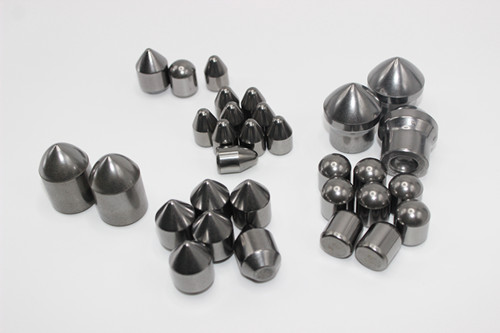Is tungsten carbide a metal or a ceramic ?
As an important engineering material, tungsten carbide (WC) plays an irreplaceable role in the industrial field. This silver-gray solid is known for its extremely high hardness and excellent wear resistance, and is widely used in cutting tools, molds, wear-resistant parts and other fields. However, there has been controversy in academia and industry about the essential properties of wolfram carbide: Is tungsten carbide a metal or a ceramic? This seemingly simple question actually involves the deep theory of materials science and reflects the complexity of the modern material classification system. Tungsten carbide is a compound of tungsten and carbon. It appears as a black hexagonal crystal with a metallic luster and is a good conductor of electricity and heat. Tungsten carbide is a type of carbon-based composite material.
1. Structural characteristics of tungsten carbide:
Tungsten carbide has a typical hexagonal crystal structure, in which tungsten atoms and carbon atoms are bonded by strong covalent bonds to form a stable lattice. This structure gives the material extremely high hardness and strength, and its hardness is second only to diamond and cubic boron nitride (CBN), reaching Mohs hardness level 9. In terms of chemical bond characteristics, tungsten carbide exhibits obvious covalent bond characteristics, which is essentially different from the metal bonds in traditional metal materials.
From the perspective of electronic structure, the electrical conductivity and thermal conductivity of tungsten carbide are between metal and ceramic. It has a certain electrical conductivity, but it is much lower than pure metal tungsten; at the same time, it maintains some characteristics of ceramic materials, such as high melting point and chemical stability. This unique electronic structure makes tungsten carbide present transitional characteristics in electrical properties.
In terms of physical properties, the density of tungsten carbide is as high as 15.63g/cm³, which is close to the density range of heavy metals. Its melting point reaches 2870℃, which is much higher than most metal materials. These characteristics reflect both certain characteristics of metal materials and the characteristics of ceramic materials.
2.Definition criteria of metal and ceramic:
Traditional metal materials usually have metallic luster, good electrical and thermal conductivity, ductility and plastic deformation ability. These characteristics originate from the metallic bond between metal atoms, which enables electrons to move freely in the lattice. These characteristics of metal materials constitute their basic physical and chemical properties.
Ceramic materials are characterized by their high hardness, high melting point, corrosion resistance and brittleness. The atoms in ceramics are mainly bound by ionic bonds or covalent bonds, and electrons are bound around atoms or ions and cannot move freely. This bonding method determines the basic properties of ceramic materials.
Modern materials science has put forward a new perspective on material classification. With the development of new materials, the traditional metal/ceramic binary classification system can no longer fully cover all material properties. The emergence of new materials such as composite materials and intermetallic compounds requires more flexible and inclusive standards for material classification.
3.Material property analysis of tungsten carbide:
From the chemical composition point of view, tungsten carbide is a compound composed of the metal element tungsten and the non-metallic element carbon. This composition makes it different from pure metals and traditional ceramics. In industrial applications, tungsten carbide is usually used in the form of cemented carbide, that is, it is bonded with metals such as cobalt, which further blurs the boundaries of its material properties.
In the material science classification system, tungsten carbide is classified as metal ceramic or cemented carbide. This classification reflects its transitional characteristics: it has some properties of metals and exhibits the properties of ceramics. In practical applications, the performance advantages of tungsten carbide are mainly reflected in its high hardness, wear resistance and chemical stability, which make it widely used in cutting processing, mining tools and other fields.

The unique properties of tungsten carbide are derived from its special crystal structure and chemical bond characteristics. Strong covalent bonds give it high hardness and strength, while some metallic bond characteristics allow it to maintain a certain degree of conductivity and toughness. This dual characteristic is the root of the value of tungsten carbide materials. The progress of materials science continues to challenge the traditional classification system. The controversy over the material properties of tungsten carbide reflects the development trend of modern materials science: material classification is no longer an either-or choice, but requires the establishment of more inclusive and flexible classification standards. In the future, with the continuous development of new material technology, we may need to redefine traditional material categories such as metals and ceramics, and establish a classification system that better reflects the essential characteristics of materials. The research and application experience of tungsten carbide will provide an important reference for this theoretical innovation.
